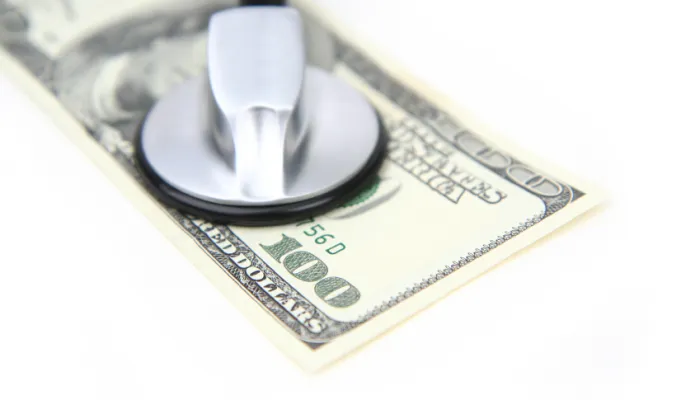Op-Ed: America's Healthy Path to Fiscal Health
Project Syndicate | April 30, 2013
Over the last five years, the growth of health-care spending in the United States has slowed dramatically – to the lowest rate in the past 50 years. The slowdown is not a surprise. It is a predictable result of the recession and slow recovery that have left millions of Americans without health insurance and dampened household spending.
But the size of the slowdown is surprising, as is the fact that it started several years before the 2008 recession – and not only in the private insurance system, but also in Medicare and Medicaid, the two major government health programs. (Medicare provides health coverage for retirees, and Medicaid provides coverage for low-income Americans and their children and those with disabilities.)
What explains this slowdown in health-care spending? How much of it is attributable to the weak economy, and how much is the result of changes in provider and consumer behavior?
Two recent studies offer different answers, but both predict that at least some of the slowdown will persist even after the economy recovers. That would be good news for the US economy, which currently devotes nearly 18% of GDP to health care, by far the largest share among developed countries. It would also be good news for America’s fiscal position, because Medicare and Medicaid are the two largest contributors to the long-term federal budget deficit.
The growth of health-care spending declined or remained unchanged in real (inflation-adjusted) terms each year between 2002 and 2011, falling to 3-3.1% in 2009-2011, the lowest rates on record since reporting began in 1960. Recent data indicate that after a slight acceleration in 2012, the growth of real health-care spending in 2013 has fallen back to its 2009-2011 average.
As a result of the recession and lagging recovery, health-care spending has also slowed significantly since 2009 throughout the OECD. Indeed, for the first time on record, real health-care spending stalled on average in the OECD in 2010, as developed countries, reeling from budgetary constraints, clamped down on health programs. Growth in health-care spending was slower in every OECD country in that year, with the exception of Germany.
A new study by Drew Altman, a respected health-care expert and President of the Henry J. Kaiser Family Foundation, concludes that slower growth in real GDP, along with a lower inflation rate, accounts for more than three-quarters of the slowdown in health-care spending in the US after 2001. The weak economy has caused people to postpone consumption of health-care services and has encouraged states and employers to restrain their spending on health.
But important cost-containing changes in the private health-care system, including more cost-sharing in private insurance plans and tighter controls in managed care, have also contributed to the slowdown. Altman conjectures that, overall, the growth in health-care spending between 2008 and 2012 was about one percentage point lower than predicted by deteriorating macroeconomic conditions alone. If this reduction continues after the economy recovers – as seems likely, given the cost-containment incentives in the Affordable Care Act (commonly known as Obamacare) – the US stands to spend $2 trillion less on health care over the coming decade.
Based on the relationship between changes in real per capita health-care spending and changes in unemployment rates at the state level, the recent Economic Report of the President concludes that the recession and lackluster recovery account for less than 20% of the slowdown in health-care spending since 2007 – and for an even smaller share of the slowdown that began in 2002. And difficult macroeconomic conditions explain little (if any) of the slowdown in Medicare spending per enrollee since 2001.
That is not unexpected, because the largely retired Medicare population is less vulnerable to macroeconomic fluctuations than is the working-age population. The Council of Economic Advisers, whose members write the president’s report, surmise that structural changes – including stronger incentives for efficiency by hospitals and providers, more cost-sharing in insurance policies, and the substitution of generic drugs for branded drugs – explain most of the deceleration in per capita spending growth. They also suggest that payment reforms contributed to the slowdown in Medicare’s spending growth after 2001, and that early responses to new Medicare regulations in the Affordable Care Act may have caused a further decline after 2010.
The long-term effect on the federal budget implied by a sustained reduction in the growth of Medicare and Medicaid spending to the rates of the last several years would be profound. These programs currently claim 21% of the budget, with Medicare accounting for two-thirds of that amount. Even a small reduction in the growth of these programs would save billions of dollars. Based on the unexpected slowdown in spending growth during the last few years, the Congressional Budget Office recently cut its ten-year projections for these programs by 3.5%, reducing the ten-year deficit by $382 billion.
In 2011, Medicare spending accounted for 3.7% of GDP. Based on current policies, the government forecasts that Medicare spending per beneficiary will grow at an average annual rate of 4.3% and will rise to 6.7% of GDP over the next 75 years. If, instead, Medicare spending per beneficiary grew by only 3.6% a year, the average rate of the last five years, Medicare’s share of GDP would remain unchanged. This would narrow the fiscal gap, a widely used measure of long-term budgetary imbalance, by almost one-third.
Trends in the US budget reflect an inconvenient truth: If the growth of spending on health-care programs cannot be slowed, stabilizing the federal debt at a sustainable level will require deep cuts in spending on other priorities and increases in taxes on the middle class. The recent slowdown in the growth of health-care spending is a promising sign that America’s budgetary tradeoffs may turn out to be less difficult than expected.

